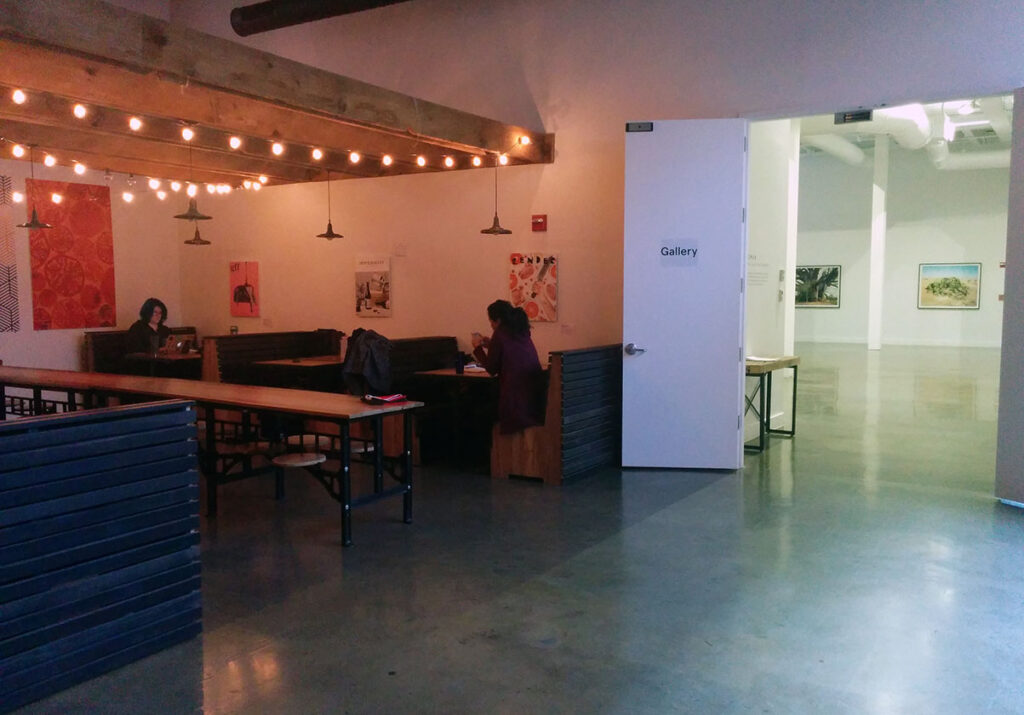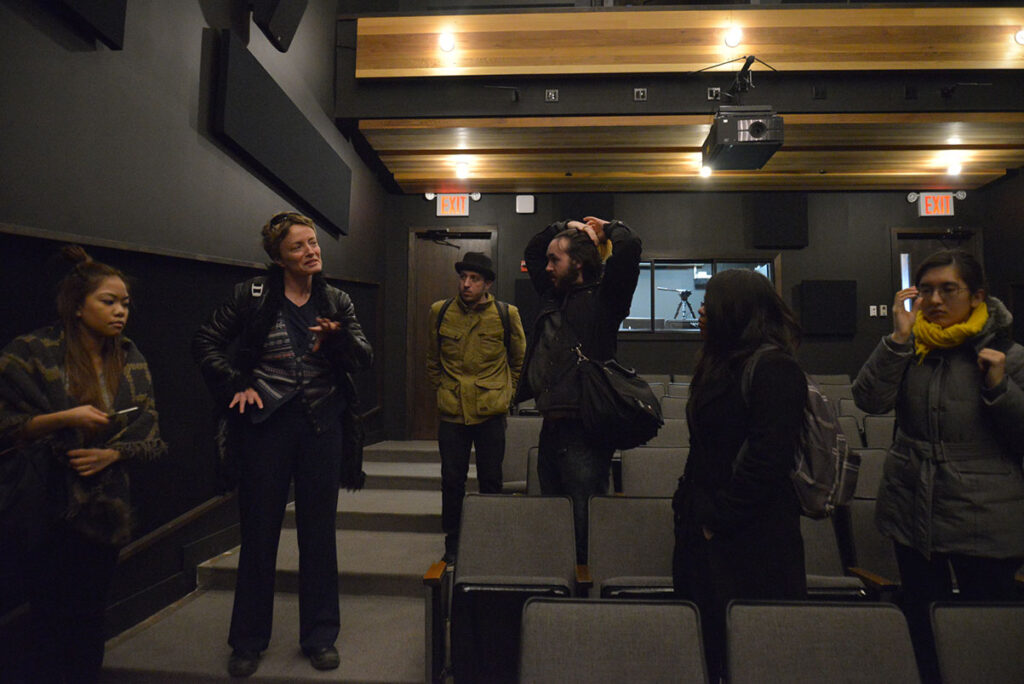
Kickstarter is a self-described “cultural institution,” with over 77,000 successfully crowdfunded projects under its belt and 8,000-10,000 projects live on the site at any given moment. Although you may be familiar with the runaway success campaigns that make it to the evening news: Veronica Mars, the Zach Braff movie, Oculus Rift, OUYA, and Pebble; there is also plenty of smaller projects you don’t hear about, like documentaries that go onto win Oscars or SXSW awards.
Crowdfunding is not a zero sum game. Big campaigns bring in users that stick around, some of which participate in smaller projects. Creators usually see 20%-30% of their backers coming from within the community.
John Dimatos works hard to foster that community, with two friends he went to ITP with on Kickstarter’s Design & Technology outreach team. They have the wide mandate to “help creators be great with their projects,” by facilitating connections between beginners, Kickstarter veterans, industrial manufacturing, and design studios. The entire outreach team is 18 people covering Kickstarter’s 15 different creative categories, and teaming up with an expert from a different category to help a creator is highly encouraged.
“When you look at Kickstarter, think about us as a place that will be around 100 years from now, and a place where big cultural events happen… tech, design, theater, art… The most successful category on our site is Theater… because theater people rally and get the funding. How do they do that? Is there crossover and can we apply these best practices to a different category like Fashion?” For example, there is a Sundance tradition of making the film’s first scene, then turning it into a half hour short, and finally into a feature. John says we are just starting to see this iterative tradition influencing tech’s massive all-or-nothing projects.
Although the 6-year old B Corporation has more than doubled its team in the past two years to 110 people, the three founders: Perry Chen, Yancey Strickler, and Charles Adler have repeatedly stated they do not intend on selling or going public. Chen is an artist and former gallery owner, Adler a designer, and Strickler–a former music critic–is the current CEO. “No MBAs on that list,” says John, “The motivation comes from a different place.”

“Job? …Or Kickstarter? My goal is to make sure independence is completely viable option for everybody.” He says 5-10 years ago, small batch manufacturing was barely feasible. Now, new marketing tools like Shipwire, Shopify, and Squarespace let you to just start plugging in products and services, allowing you to focus on what you care about the most: making and sharing.
Successful projects still depend on logistics though. John recommends making Bill of Materials (BOMs), outsourcing assembly to spend more time costing down materials, comparing samples when outsourcing. Packaging costs a lot of money, and staggering rewards for batch production is smart.
The “Exploding Kittens” card game is one of John’s favourite examples of a project which generated a lot of buzz over its wacky stretch goals, with fans (many from The Oatmeal) flooding the comment section. Creator Elan Lee thought it might make $200k, but in reality it made $8.8 million. The project was advised by Dan Shapiro of Robot Turtles, “The most-backed game in Kickstarter History [at over $600k]” and Max Temkin of Cards Against Humanity, which only made about $15k but exploded in popularity later.
A crowdfunding campaign that bombs doesn’t necessarily mean the end of the project. Step back and reevaluate. “What did I do wrong in the actual project and its presentation, and what can I fix the next time?” asks John. For example, although I saw them for sale in the MoMA Store, the Ozobot iPad colour tracking robots originally didn’t fund because they didn’t focus enough on the application. This is acute for revolutionary projects that have no cognitive framework like Oculus, Ozobot, and Pebble.
The most important advice is to get feedback on stuff before you actually present it to the public. Remove your ego from it, start showing your work to a select group of people and keep growing that group until you feel that everybody understands what you’re doing, especially if you’re investing 2 or 3 years of your life into it. People considering making a project should join collectives, maker spaces, and startup accelerators.
John describes an interesting edge crowdfunding has over large companies, which are usually too detached from the typical consumer: You can use your backers and fans as beta testers, inviting them to parties, socializing, and even hiring from them.
When asked about how Kickstarter compares to the other crowdfunding giant, “[Kickstarter] says things in their Project Guidelines like, ‘Your project must be transparent, your project must share things with others, and your project must be honest and straightforward.’” John has also suspended projects that violate community trust, including racist and misogynistic projects like Pickup artist (PUA) guides. Another claim is that all-or-nothing funding is more motivating in rallying fans versus Indiegogo’s Flexible Funding. “Find the platform that fits you the best,” John says, “There is a huge expansive universe we need to develop together… I’d like to think there is a cooperative ethos there.”
Could a blunt analogy be made with the App Store vs. the Google Play Store? Kickstarter is curating submissions for a “high quality” end-user experience, while Indiegogo prioritizes a more literal openness and developer flexibility.
How did John get started in tech? After moving from Greece to the United States to study International Relations with a focus in science and technology policy, he started an oriental rug company with best friend. “Easily one of the most transformative experiences I’ve ever had, I learned how to sell things, logistics and operations, and finances… But we saw no future in it.” After reading stuff by Clay Shirkey and Tom Igoe, he went to ITP in 2007 where Kate Hartman was his resident researcher.
“Design with social impact motivates you, makes you feel good about spending your time and staying up late working on something.” John helped with the Water Canary prototype, ended up working for Unicef, then teaching for ITP. He also worked at Makerbot as the Launch Manager, then Production Manager of the Replicator 1. The corporatization of what was formerly an open-source community disappointed John (EDIT: It appears Stratasys’ “reorganization” is in full swing now!), and he left after they had launched their scanning booth, starting at Kickstarter a couple weeks later.
Crowdfunding will leverage an effect on larger society over the next 20-30 years. John believes exponential successfully funded projects “will actually change the culture of professionalism and jobs in a healthy way. If large companies who hire people one day see that people have options, then they will also start to shift how they treat employees, how they treat creativity and collaboration in the workplace.”
Leave a Reply